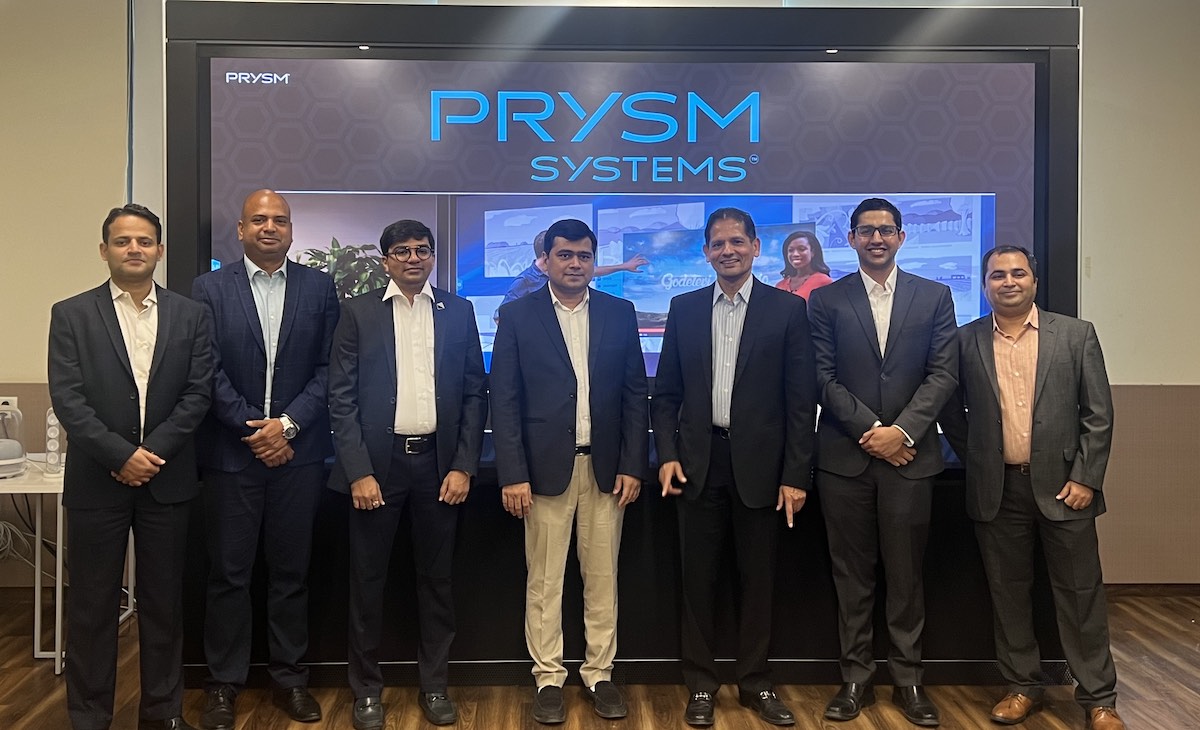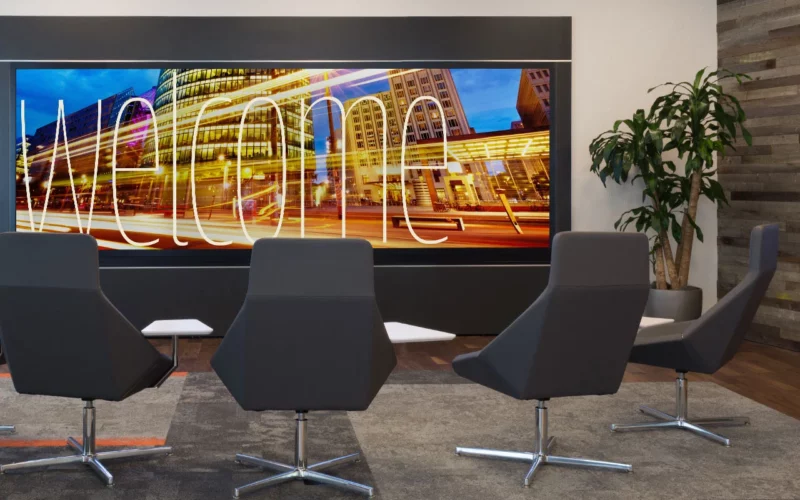
Prysm Still Out There Marketing Laser Phosphor Displays, And They’ve Grown 9X In Size
November 29, 2023 by Dave Haynes
Admittedly, I had no real idea that Prysm Systems was still out there marketing its laser phosphor displays (LPD) screen technology, more than a decade after it came on the scene – along with Christie’s oroginal MicroTiles – as a new kind of video wall tech.
But Silicon Valley-based Prysm is continuing to develop and market products based on its technology, and the company pushed out PR today showing how a version is being used at a demo center in Mumbai, India.
As part of Prysm Systems continued growth, says PR, the company is invested in strengthening its presence in India by providing access to experience the advantages of a single-panel, high-impact laser phosphor displays (LPD).
Prysm Systems’ Mumbai Demo Center is impeccably designed to showcase the most memorable and meaningful collaboration experience for an audience. To continue to serve a growing market and provide resources to existing customers, including top IT/ITES, financial institutions and government organizations, Prysm Systems has introduced a new demonstration center to create a hands-on experience for current and potential customers. The Mumbai Demo Center will join Prysm Systems’ growing list of experience facilities, including an existing location in Bengaluru, India and future location in Delhi, India.
“Mumbai is a very critical location for us,” said Amit Jain, president and chief executive officer for Prysm Systems. “We have quite a few existing customers and the new demo center expands our ability to attract new opportunities. We understood the value of a demo center in Mumbai and within a short timespan we were able to make it happen. As a result, end users, consultants and system integrators can visit this new location to experience our total solution that unites industry-leading large-format displays with powerful presentation and collaboration software. Thus, it’s certainly a strong addition to our ongoing global expansion efforts.”
The Mumbai Demo Center, created in partnership with Trustech AV, features Prysm Systems’ LPD Series, the world’s largest interactive single-panel display, boasting a panoramic image uninterrupted by seams and bezels. The LPD Series produces vivid colors presented in best-in-class resolution with a deep contrast to deliver stunning picture quality. With a 178-degree viewing angle, the high-quality display can be viewed at any distance or angle. Plus, the large-format display eliminates common barriers of collaboration by enabling up to 32-points of touch simultaneously. Prysm Systems’ stunning presentations, engaging displays and knowledgeable staff can satisfy every collaboration and display need.
The original Prysm products were, like Christie’s product, microwave-sized, 25-inch wide cubes that stacked and tiled much like LED cabinets to form larger display surfaces – and not necessarily just in rectangles. The difference now is that a big surface is now possible from a single unit – like this 225-inch diagonal beast that rivals the larger LED all-in-ones on the market.

Laser phosphor display tech involves movable mirrors that direct several beams of laser light onto a screen coated with color phosphor stripes. The laser draws an image onto the screen by scanning line by line from top to bottom, with the energy from the lasers’ light activates the phosphors, which emit photons, producing an image.
Thank you Wikipedia for that. It did not come off the top of my head.
Prysm came up with LPD back in 2005, and started marketing it by the late 2000s – targeting everything from retail to control rooms. It had its day in digital signage as an almost seamless alternative to LCD video walls, but then fine pitch indoor LED turned up and made for a formidable competitor



LPD Leverages the significant advantage of activating the single passive phosphor screen. LPD is perfectly aligned to target markets. The color gamut volume and accuracy rivals all alternatives.
Full disclosure, my company represents a laser phosphor projection company. I’m not going to self promote here, but I will say a few things about this technology.
It’s often misunderstood that this is laser light, which could be harmful to eyesight. It is, in fact energized phosphor, with the energy being provided by the laser. No direct visible laser. There are some interesting benefits. The phosphor formulation dictates the wavelengths of light, which is often accurately touted for the great colour reproduction. But, it also provides the opportunity to restrict the light to only visible spectrum, through precise phosphor formulation, avoiding potential UV emissions which can be harmful in certain situations.
Also, while not exclusive to this technology, it can be pretty power efficient. Especially in projection. In a panel display, it’s biggest drawback is bulk/depth, but that doesn’t rule it out in every architectural situation.
Ironically, this tech is not far removed in concept from old CRTs, it just uses laser energy instead of cathode rays.